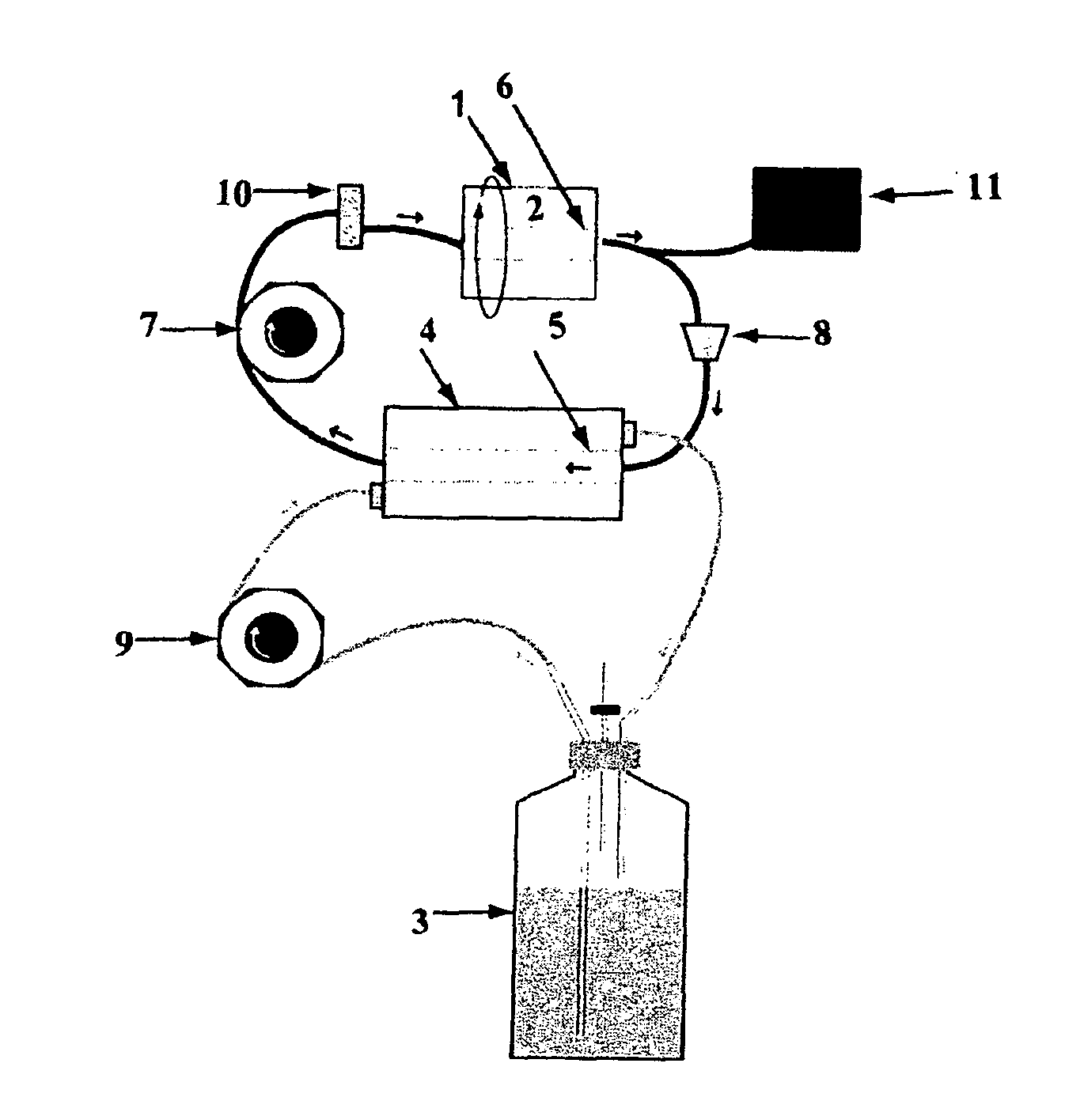Method for Culturing Mammalian Stem Cells
a stem cell and mammalian technology, applied in the field of culturing mammalian stem cells, can solve the problems of increasing the amount of adjunct products, still damage to cells, and extremely expensive cytokines
- Summary
- Abstract
- Description
- Claims
- Application Information
AI Technical Summary
Benefits of technology
Problems solved by technology
Method used
Image
Examples
example
Material and Methods
hES Cell Culture
[0088]The human ES cell line VUB01 (XY, passage 80), derived at the Vrije Universiteit Brussels (Mateizel et al., 2006), SA01 distributed by Cellartis (Sweden), H9 (WA09, WiCell Research Institue) and HUES-9 OCT-4GFP., in which GFP is under the control of the full length POU5F1 (OCT-4) promoter, kindly given by Chad Cowan (Harvard Stem Cell Institute), were also used during this study. Cells were maintained on a feeder layer of mitomycin C-inactivated murine STO (Sim's Thioguanine Ouabaine Resistant) fibroblasts in Knock-Out (KO)-DMEM supplemented with 20% of KO Serum Replacement (KSR), 1 mM L-glutamine, 0.1% penicillin / streptomycin, 1% non-essential amino acids and 4 ng / ml FGF2 (all from Invitrogen, Cergy, France). Culture medium was changed by half daily, supplemented by 8 ng / ml FGF2. For passaging, the cells were harvested using collagenase type IV (1 mg / ml, 5 min). The dish was washed twice with hES medium and gently scraped with a plastic pip...
experiment 1
[0117]Using co-culture with MS5 feeder cells, early neural rosettes were observed 23 days after beginning of the induction, in agreement with previously published data (Perrier et al., 2004). The process was much faster using the perfused / dialysed STLV to grow hEBS as early neural rosettes were then collected after only 13 days (6 days in the bioreactor and 7 days after plating hEBs (FIG. 5A). Furthermore, real time PCR for the markers of undifferentiation OCT4 and NANOG showed virtually no expression in the STLV-derived rosettes whereas both remained expressed in co-culture-derived rosettes at up to 17% and 10% of hES levels, respectively (FIG. 5B).
[0118]When normalized using 8 week-old foetal brain as a control, neural rosettes derived from STLV-produced hEBs demonstrated levels of expression for all neural marker genes tested (FGF5, SOX1, PAX6, NCAM) similar to those observed in neural rosettes derived by co-culture (FIG. 5C).
experiment 2
[0119]To analyze the effect of rotary bioreactor on the specific neural differentiation, we have compared this differentiation for hEBs derived from H9 hESC line in the p / dialyzed STLV, perfused STLV, non-perfused STLV, static culture conditions and using co-culture with stromal cells.
[0120]As shown in FIG. 5bisA, the time delay to “neural rosette” formation grown was significantly shorter in all three STLV conditions as compared to SSC (1 to 2 days), and all were more than a week shorter than following induction of stromal cells. In STLV conditions, they were collected after only 13-14 days (6 days in the bioreactor and 7-8 days after plating hEBs) whereas early neural rosettes were only observed after 23 days using co-culture with MS5 feeder cells, in agreement with previous data (10).
[0121]Undifferentiated leftover cells in neural rosettes were analyzed by real time PCR of OCT-4 and NANOG. The expression of these markers of the undifferentiated stage was dramatically reduced STLV...
PUM
| Property | Measurement | Unit |
|---|---|---|
| molecular weight | aaaaa | aaaaa |
| molecular weight | aaaaa | aaaaa |
| molecular weight | aaaaa | aaaaa |
Abstract
Description
Claims
Application Information
 Login to View More
Login to View More - R&D
- Intellectual Property
- Life Sciences
- Materials
- Tech Scout
- Unparalleled Data Quality
- Higher Quality Content
- 60% Fewer Hallucinations
Browse by: Latest US Patents, China's latest patents, Technical Efficacy Thesaurus, Application Domain, Technology Topic, Popular Technical Reports.
© 2025 PatSnap. All rights reserved.Legal|Privacy policy|Modern Slavery Act Transparency Statement|Sitemap|About US| Contact US: help@patsnap.com



